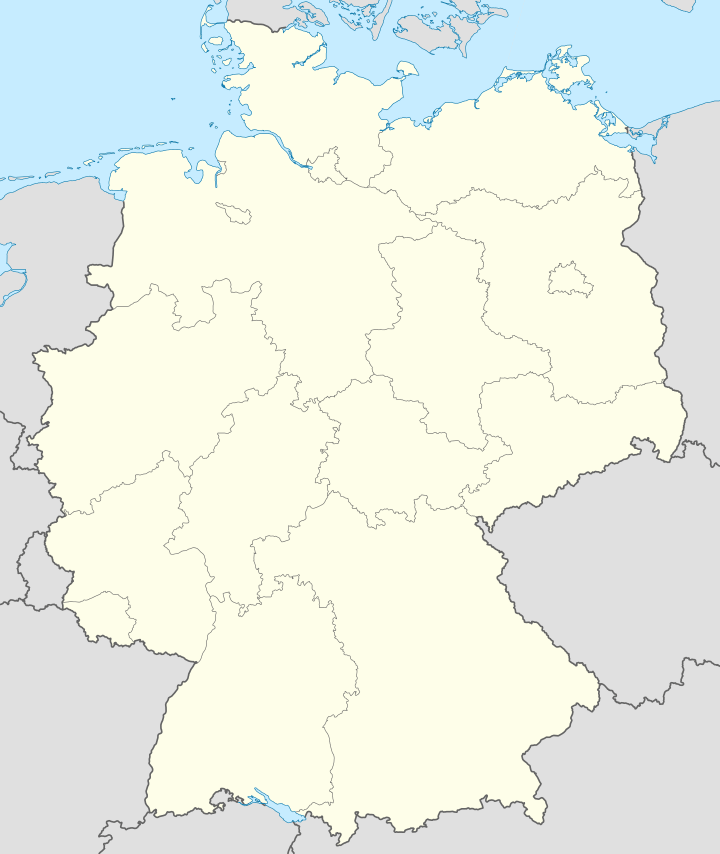Sylt-Ost
| Sylt-Ost | ||
|---|---|---|
|
Former municipality now Ortsteile of Gemeinde Sylt | ||
|
St. Severin in Keitum | ||
| ||
 Sylt-Ost | ||
Location of Sylt-Ost within the Nordfriesland district | ||
| Coordinates: 54°52′N 08°22′E / 54.867°N 8.367°ECoordinates: 54°52′N 08°22′E / 54.867°N 8.367°E | ||
| Country | Germany | |
| State | Schleswig-Holstein | |
| District | Nordfriesland | |
| Town | Gemeinde Sylt | |
| Area | ||
| • Total | 37.97 km2 (14.66 sq mi) | |
| Population (2007-12-31) | ||
| • Total | 5,833 | |
| • Density | 150/km2 (400/sq mi) | |
| Time zone | CET/CEST (UTC+1/+2) | |
| Postal codes | 25980 | |
| Dialling codes | 04651 | |
| Vehicle registration | NF | |
| Website | www.gemeinde-sylt.de | |
Sylt-Ost (translated, East Sylt) is a former municipality on the island of Sylt, in the district of Nordfriesland, in Schleswig-Holstein, Germany. It used to be the administrative seat of the Amt Landschaft Sylt and a municipality into which a number of villages had been amalgamated in 1970. However, following a referendum in May 2008, Sylt-Ost merged with Westerland and Rantum to form the collective municipality Gemeinde Sylt which was created on 1 January 2009. Since 2009, the seat of the Amt Landschaft Sylt has been in Westerland.[1]
Subdivision
The former municipality was divided into the five originally independent villages of Archsum, Keitum, Morsum, Munkmarsch and Tinnum. Sylt-Ost was created in 1970. The five villages are now Ortsteile of Gemeinde Sylt.
Archsum
A prehistoric settlement in this area has been proven by archaeological research. According to folklore, all inhabitants of Archsum fell victim to the plague in 1350. Afterwards the village is said to have been re-settled by people from Rantum. In 1634 the sea dykes protecting the village were destroyed by the Burchardi flood. Only in 1938, due to the construction of the neighbouring Rantum Basin seaplane port, Archsum was again completely protected by dykes. Of all villages on Sylt, Archsum has the highest percentage of inhabitants still speaking Söl'ring.
Keitum
Keitum has a historical church (St. Severin), dating back to the 13th century. The green cliff is also located near Keitum. The village was the economic and social center of the island until tourism started to become of central importance and Westerland, the island's only town, started to expand. There are still many beautiful Frisian houses left which were built by the town's seafarers, especially during the days of whale hunting (1650–1850). Due to its numerous alleys and the large number of old trees, Keitum is today regarded as the island's "green village".
Morsum
Morsum is located in a heath on a 1.8 kilometres long cliff shore, which reaches up to 21m of height and shows the geological history of the last five million years. It has been under landscape conservation since 1893.
The late Romanesque church of St. Martin dates back to the same era as the one in Keitum. It was built in the 13th century from granite blocks and cobblestones. Instead of a standard tower, it features a small separate wooden bell tower. In the 15th and 16th centuries, this village was frequently struck by the plague. Since 1958, Morsum has been recognised as a climatic health resort.
Munkmarsch

The village of Munkmarsch was first recorded in 1422. In 1859, a harbour was constructed featuring a ferry link to the mainland harbour of Hoyer (today in Denmark). When the Hindenburgdamm was completed in the 1920s, the village lost its importance. A marina is today located at the site of the old harbour.
Tinnum
Tinnum is the largest settlement in Sylt-Ost and plays a key role on the island of Sylt. Not least because of its central location on Sylt, a number of business parks can be found here, which supply many of the tourism-related enterprises on Sylt. Moreover, Tinnum offers a large number of retailing outlest, giving it, next to Westerland, a central role in provisioning local citizens and tourists.
The original village of Tinnum, which used to be the seat of the island's bailiff from 1547 to 1868 — and additionally hosted the local prison and courthouse — was first mentioned in 1440. The bailiff's house from 1649 is one of the oldest remaining buildings on Sylt.
Near Tinnum there is also the so-called Tinnumburg (Tinnum castle), an eight metres tall ring wall with a diameter of 120 m which was built around the time of Christ's birth, likely as a pagan holy site.
Politics
Mayors
- 1986-1996: Heinz Maurus, CDU
- 1996-2005: Ingbert Liebing, CDU
- 2005-2008: Christoph Schmatloch, CDU
- 2008: Erik Kennel
Arms
Blazon: Per fess low or and azure. Above a sun rising in his splendour gules, accompanied by five eight-pointed mullets azure. Below a herring argent swimming to the left.[2]
The coat of arms was designed by a Sylt artist and granted in 2002. The five mullets (stars) in it symbolise the villages of the municipality. The herring is meant to depict the former importance of fishery for the area, it was already used as the seal of the Sylt bailiffs in the 17th century. The colours are the traditional North Frisian colours which are also reflected in the island's national costume.
Economy
The most important factor of income in the area is tourism, which nowadays completely dominates the Sylt economy. Having been the most important sector prior to the arrival of the tourist business, agriculture today plays a minor role.
Notable people
- Gustav Jenner (1865–1920), born in Keitum, was a composer and conductor.
- Boy Lornsen (1922–1995), born in Keitum, was a sculptor and author of children's literature.
References
- ↑ "Westerland und Sylt-Ost fusionieren" (in German). Schleswig-Holsteinischer Zeitungsverlag.
- ↑ Schleswig-Holstein Municipal Roll of Arms (in German)

